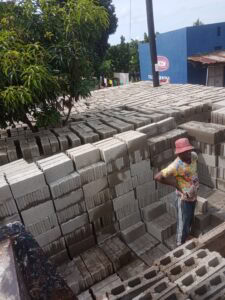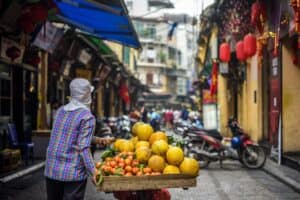In the vibrant landscape of Ugandan architecture, the choice of roofing plays a crucial role in defining the aesthetics, functionality, and durability of a home. Among the plethora of options available, hidden roofs and non-hidden roofs stand out as popular choices, each offering unique benefits and considerations. For homeowners in Uganda, where climatic conditions and cultural influences play significant roles, making an informed decision between these roofing styles is paramount. This article aims to explore the factors specific to Uganda that should be considered when choosing between hidden roofs and non-hidden roofs, empowering homeowners to make the right choice for their needs.
Hidden Roofs:
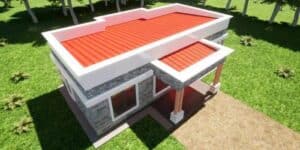
Hidden roofs, also known as concealed or invisible roofs, are gaining traction in Ugandan architecture for their sleek, modern appearance and innovative design. These roofs are crafted to conceal the underlying structure beneath the exterior cladding, creating a seamless and minimalist aesthetic that aligns well with contemporary design sensibilities.
Advantages of Hidden Roofs in Uganda:
Climate Adaptability: Hidden roofs can offer improved insulation and protection against Uganda’s tropical climate, helping to regulate indoor temperatures and minimize heat transfer2
Aesthetic Appeal:
The clean lines and unobtrusive design of hidden roofs can enhance the visual appeal of a home, complementing both modern and traditional architectural styles.3
Durability: Concealed roofing materials, when chosen wisely, can withstand Uganda’s weather conditions, including heavy rainfall and intense sunlight, leading to long-term durability.4
Security and Privacy: Concealed roofing provides an added layer of security and privacy, particularly in urban areas, where privacy concerns are prevalent. Considerations for Hidden Roofs in Uganda:
Cost:
While hidden roofs offer numerous benefits, they may come with a higher initial cost due to the specialized materials and expertise required for installation.
Maintenance:
Regular maintenance of hidden roofs is essential to ensure their longevity, and accessing concealed components may require specialized skills and equipment.
Expertise:
Constructing hidden roofs demands skilled craftsmanship and knowledge of modern construction techniques, which may not be readily available in all regions of Uganda.
Material Selection:
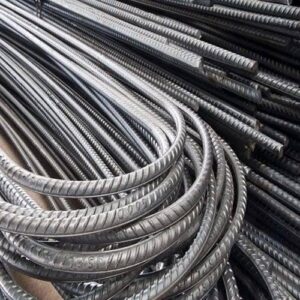
Choosing appropriate roofing materials that can withstand Uganda’s climate is crucial for the effectiveness and longevity of hidden roofs.
Non-Hidden Roofs:
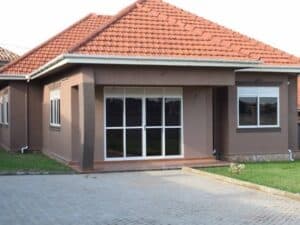
Non-hidden roofs, characterized by visible roof elements such as rafters and eaves, have long been a staple of Ugandan architecture. While they may lack the sleekness of hidden roofs, they offer their own set of advantages suitable for Uganda’s diverse landscape.
Advantages of Non-Hidden Roofs in Uganda:
Cost-Effectiveness:
Non-hidden roofs are often more affordable to install and maintain compared to hidden roofs, making them accessible to a broader range of homeowners.
Cultural Relevance:
Non-hidden roofs align with traditional Ugandan architectural styles, preserving cultural heritage and contributing to a sense of community identity.
Adequate Ventilation:
Exposed roof structures allow for natural airflow, which can be beneficial in Uganda’s humid climate, promoting ventilation and reducing the risk of mold and moisture-related issues.
Design Flexibility:
Non-hidden roofs offer greater design flexibility, allowing homeowners to incorporate decorative elements and architectural features that reflect their tastes and preferences.
Considerations for Non-Hidden Roofs in Uganda:
Aesthetic Preferences:
While non-hidden roofs have their advantages, some homeowners may prefer the sleek, modern look of hidden roofs, highlighting the importance of personal aesthetic preferences.
Maintenance:
While non-hidden roofs may be easier to access for maintenance and repairs, regular upkeep is still essential to prevent deterioration and prolong the lifespan of the roof.
Weather Resilience:
Careful consideration of roofing materials and design is necessary to ensure non-hidden roofs can withstand Uganda’s climate, including heavy rainfall, strong winds, and intense sunlight.
Community Norms:
In some regions of Uganda, community norms and cultural practices may influence the choice of roofing style, emphasizing the importance of considering local preferences and traditions.
Conclusion:
In conclusion, the choice between hidden roofs and non-hidden roofs in Uganda involves a careful assessment of various factors, including climate resilience, cultural relevance, cost-effectiveness, and personal preferences. While hidden roofs offer a modern aesthetic and enhanced privacy, non-hidden roofs provide cost-effective solutions with cultural significance and design flexibility. By weighing these factors and considering the unique needs of their location and lifestyle, homeowners in Uganda can make an informed decision that enhances the beauty, functionality, and durability of their homes for years to come.


